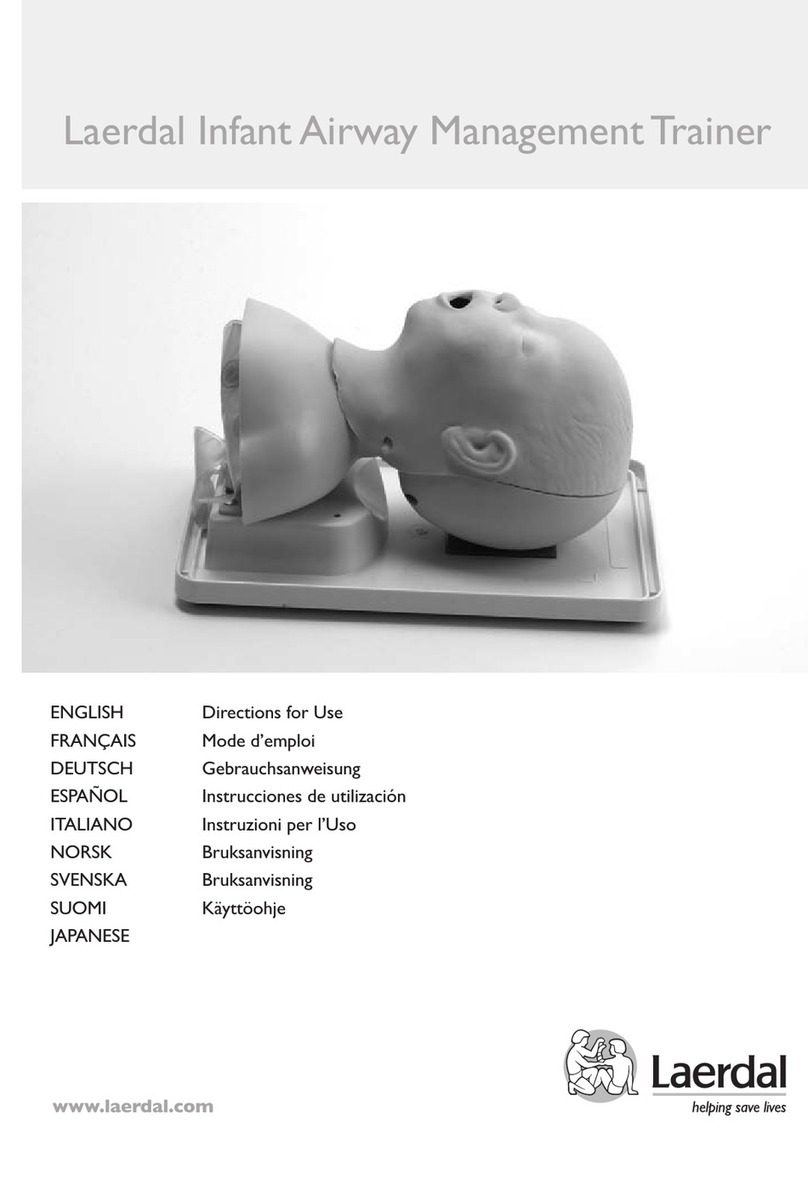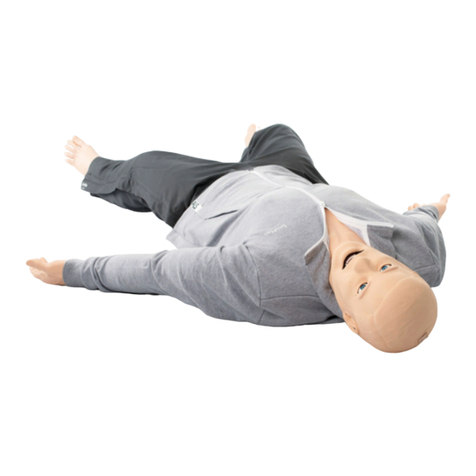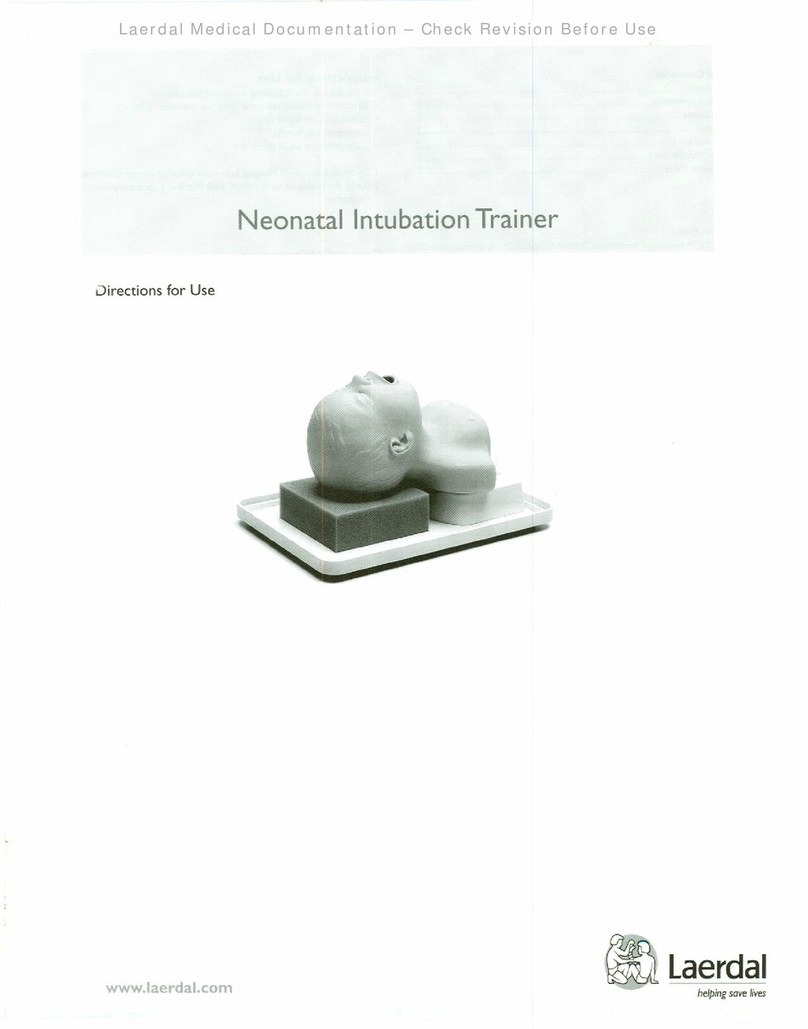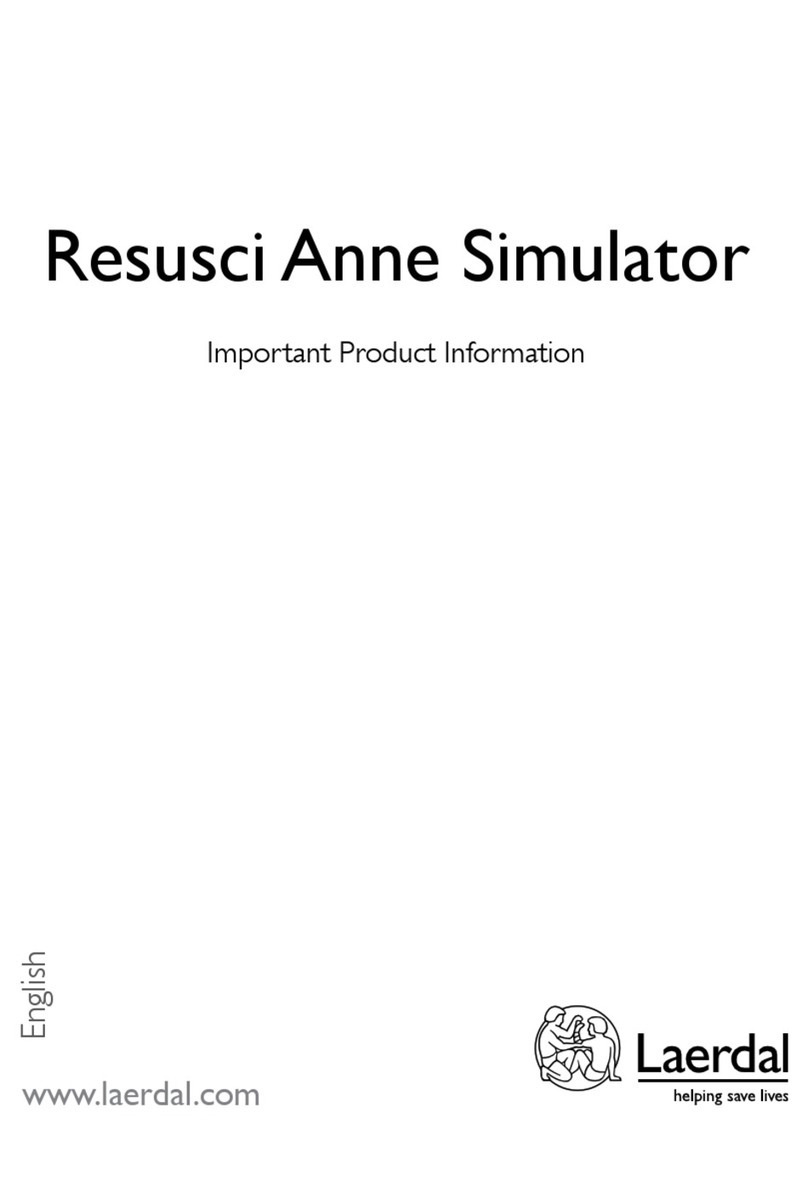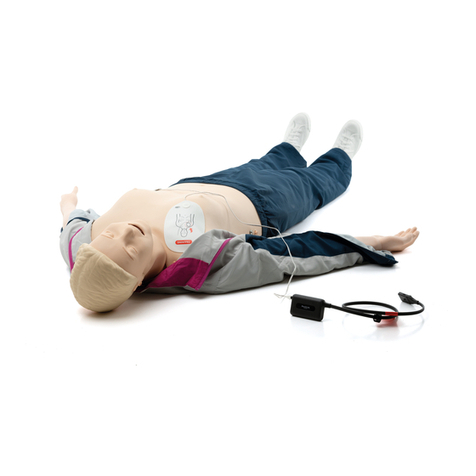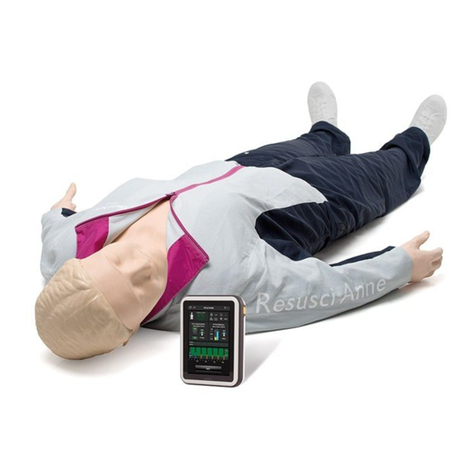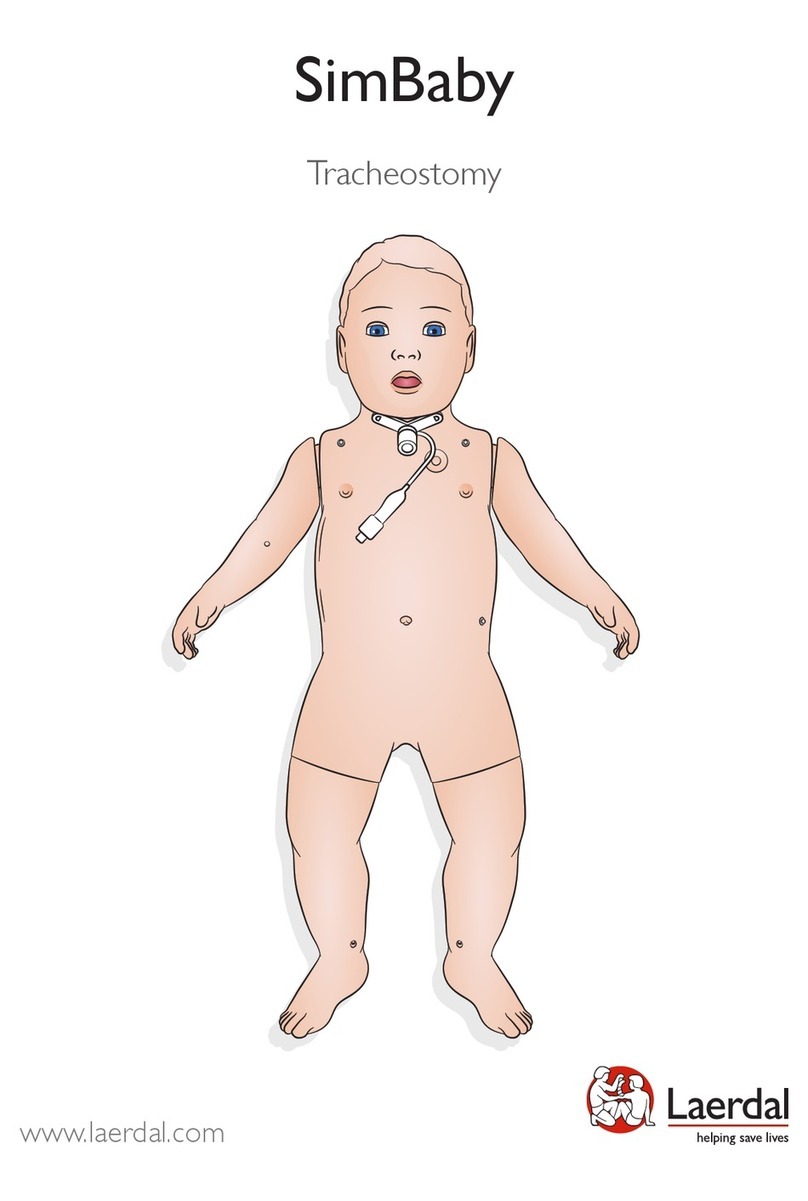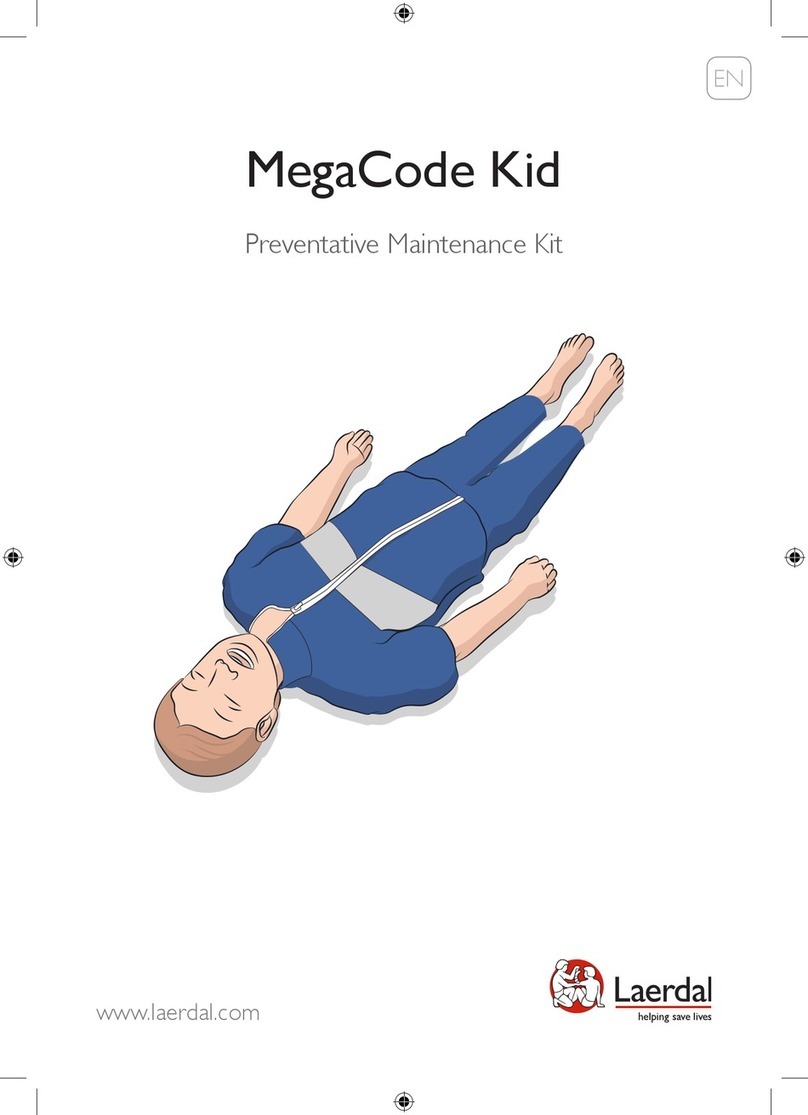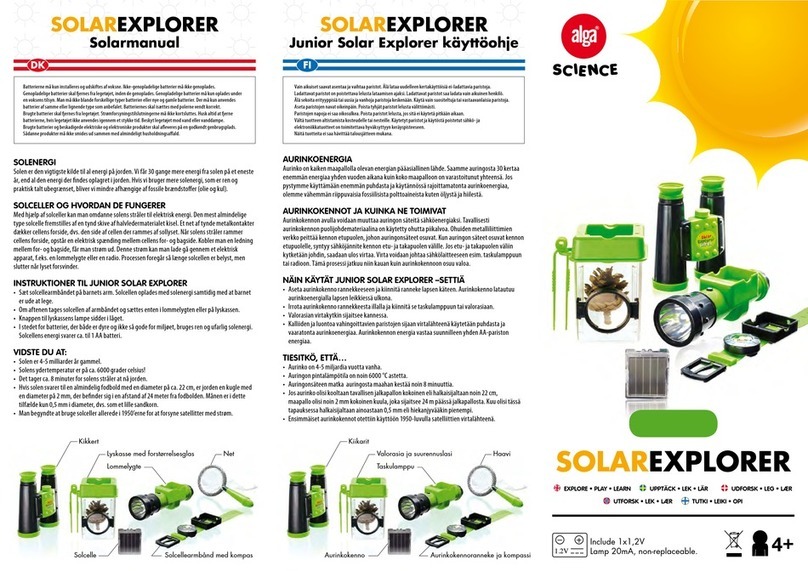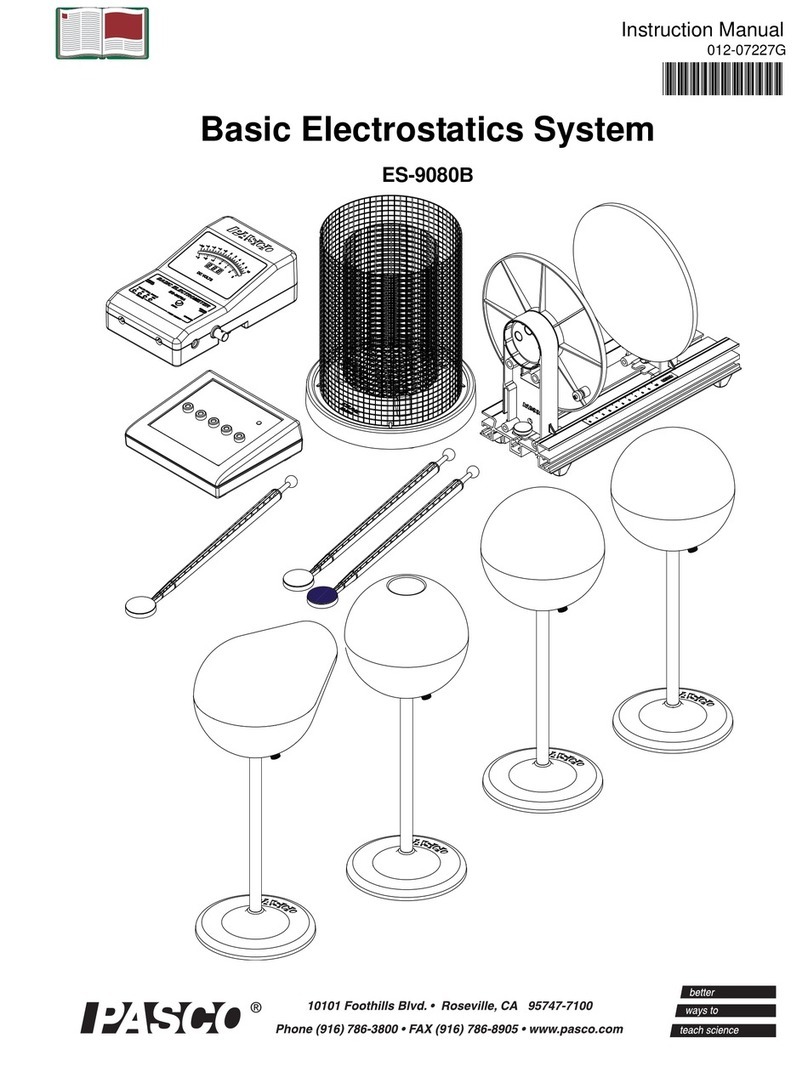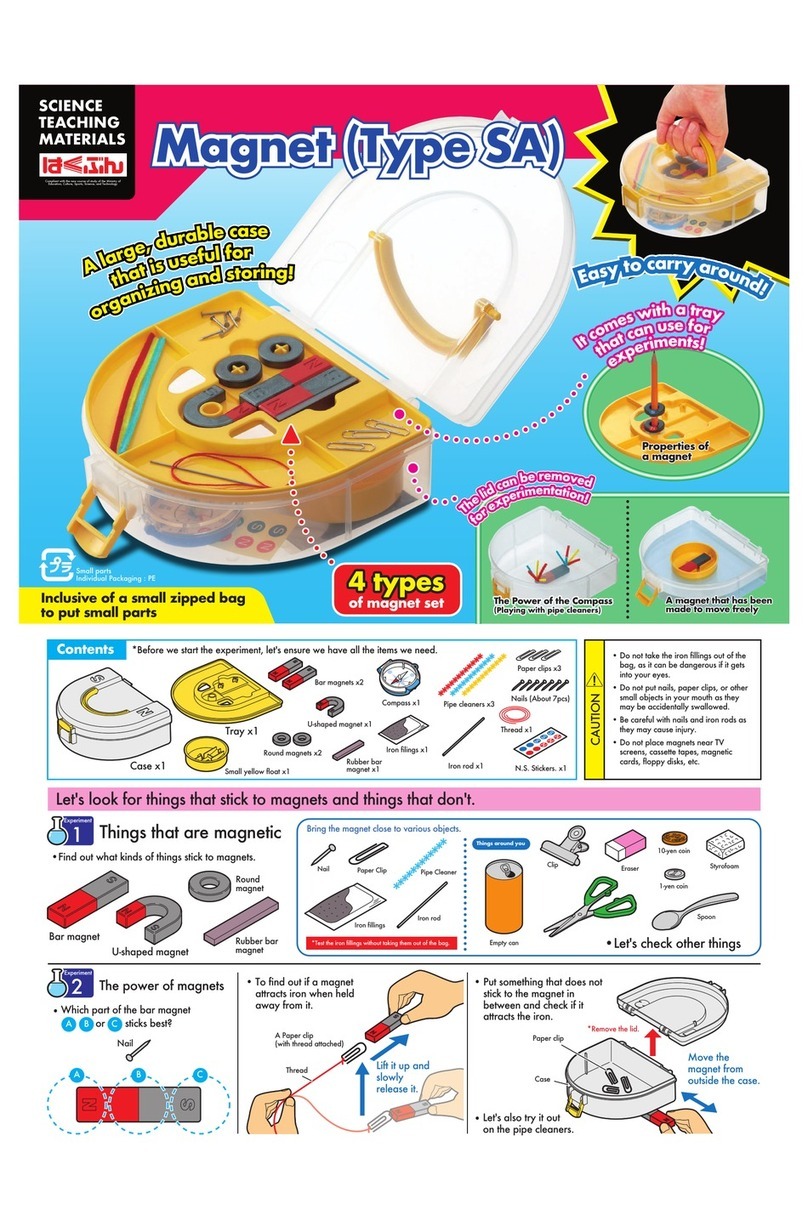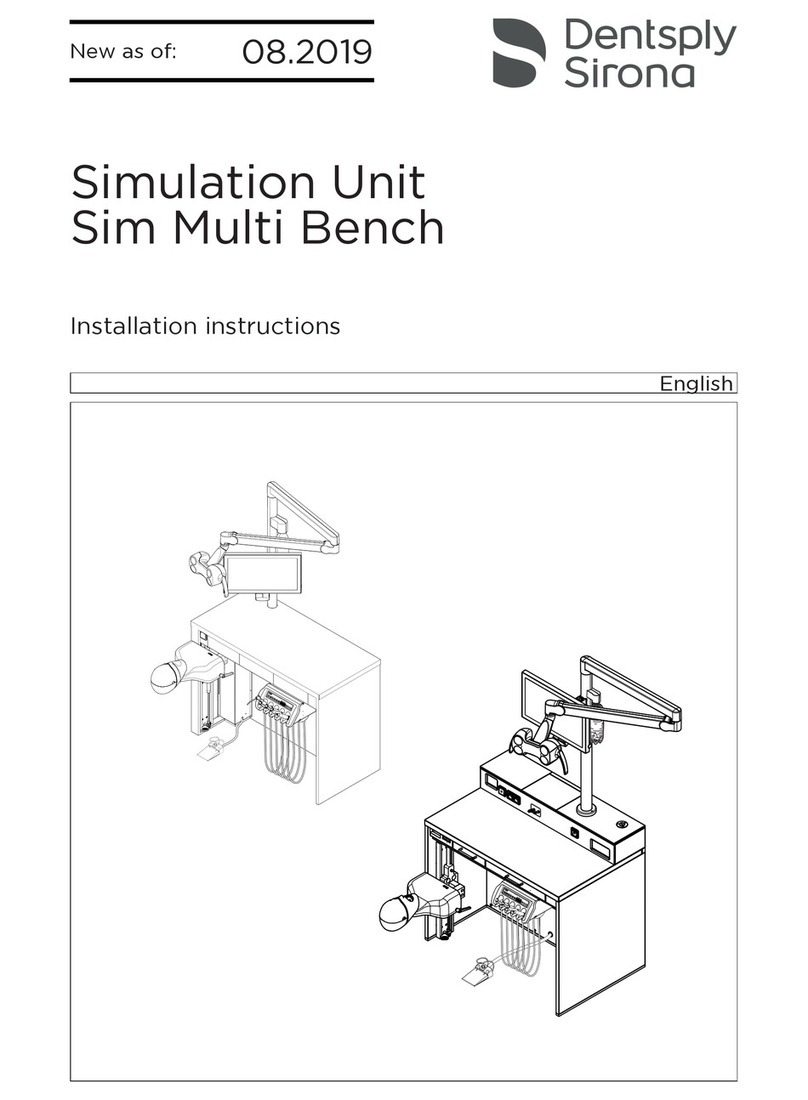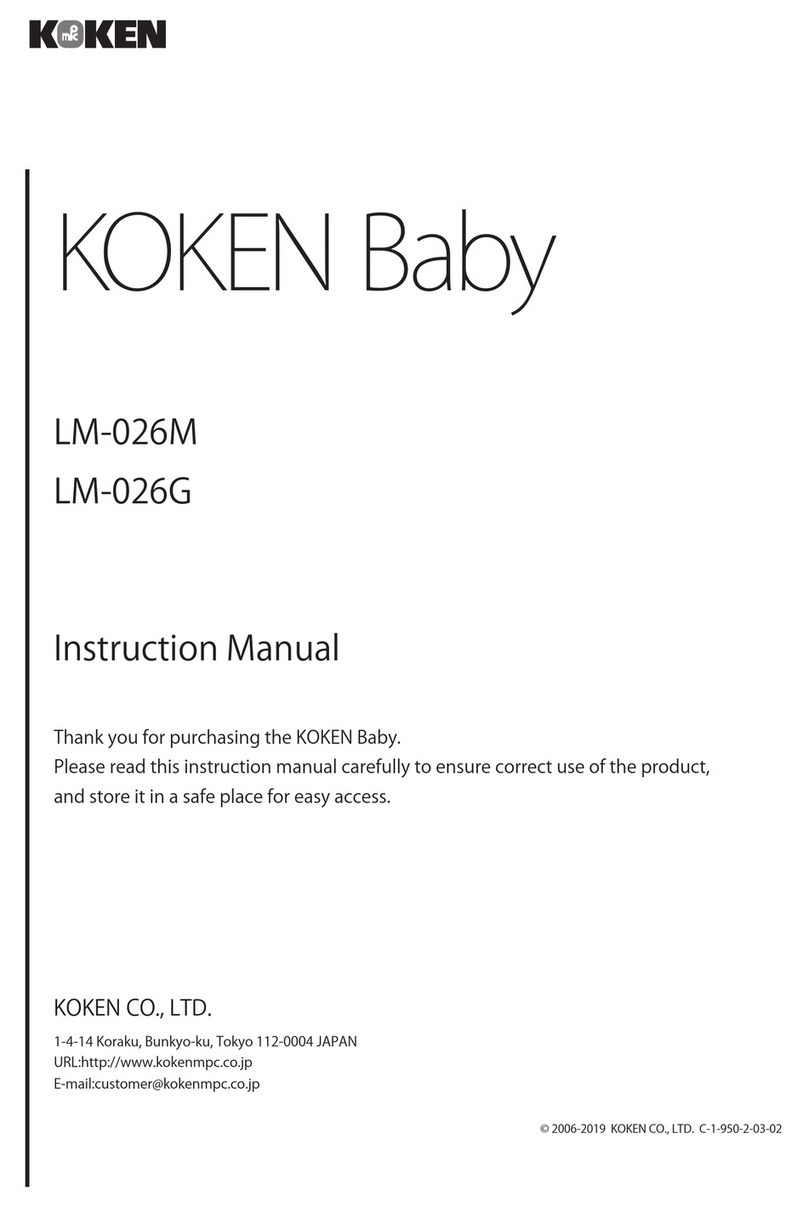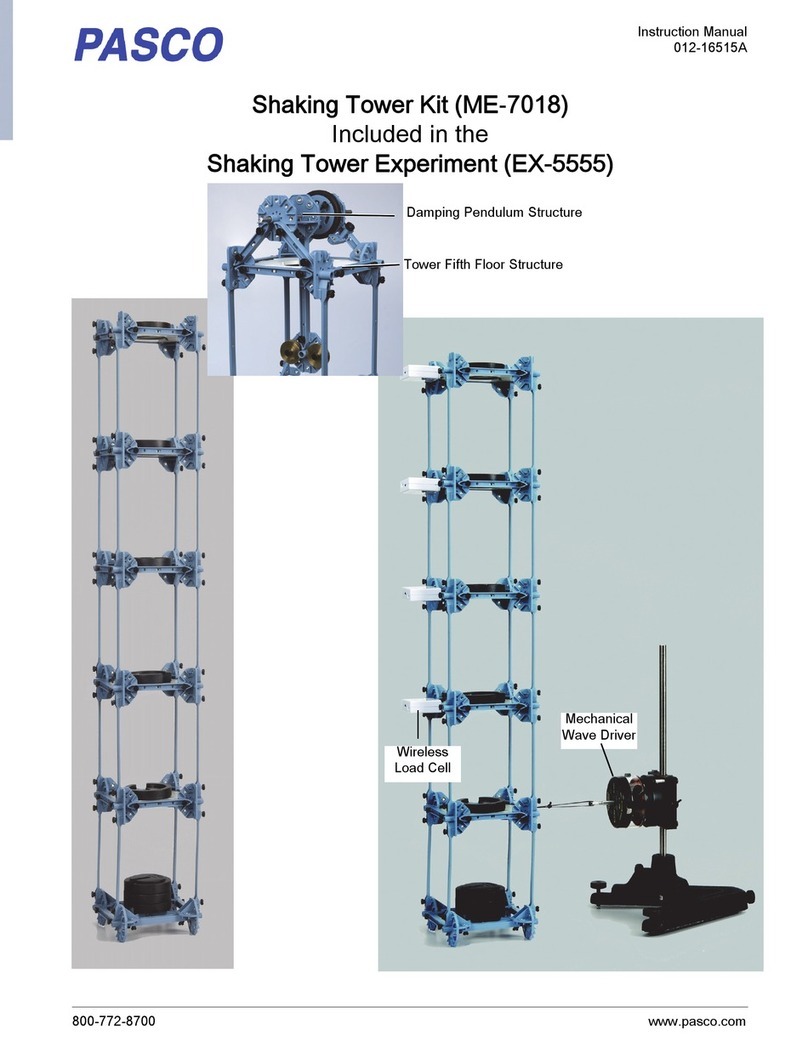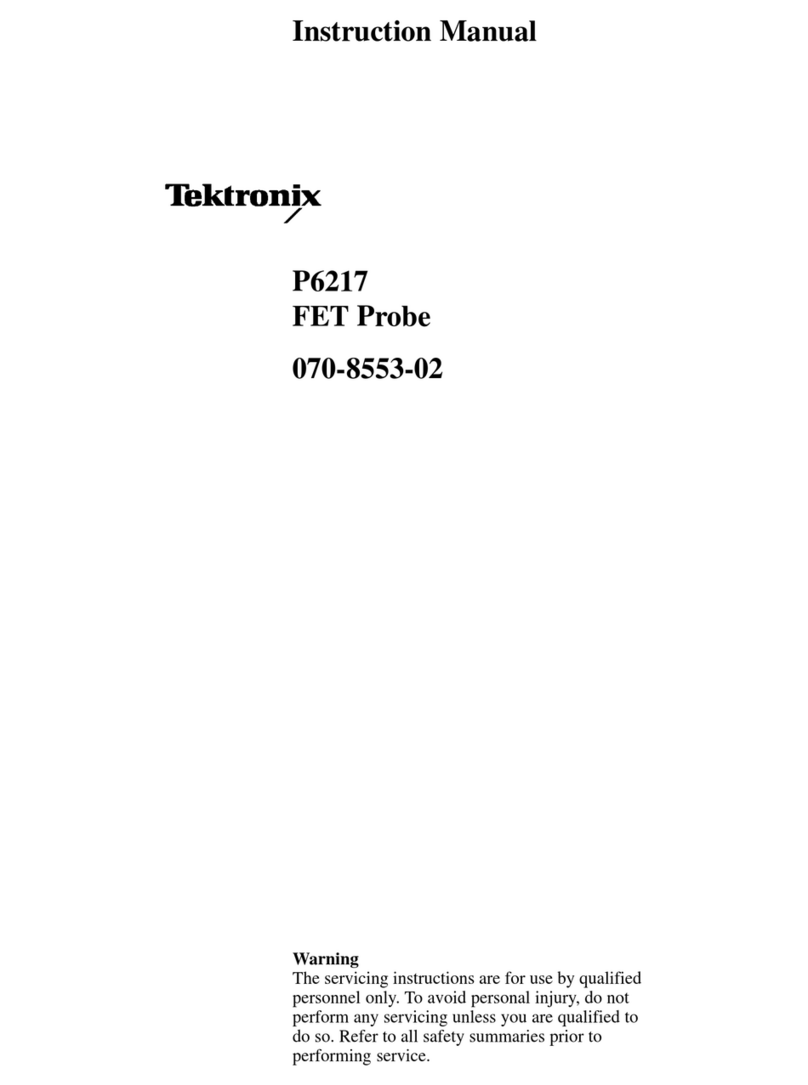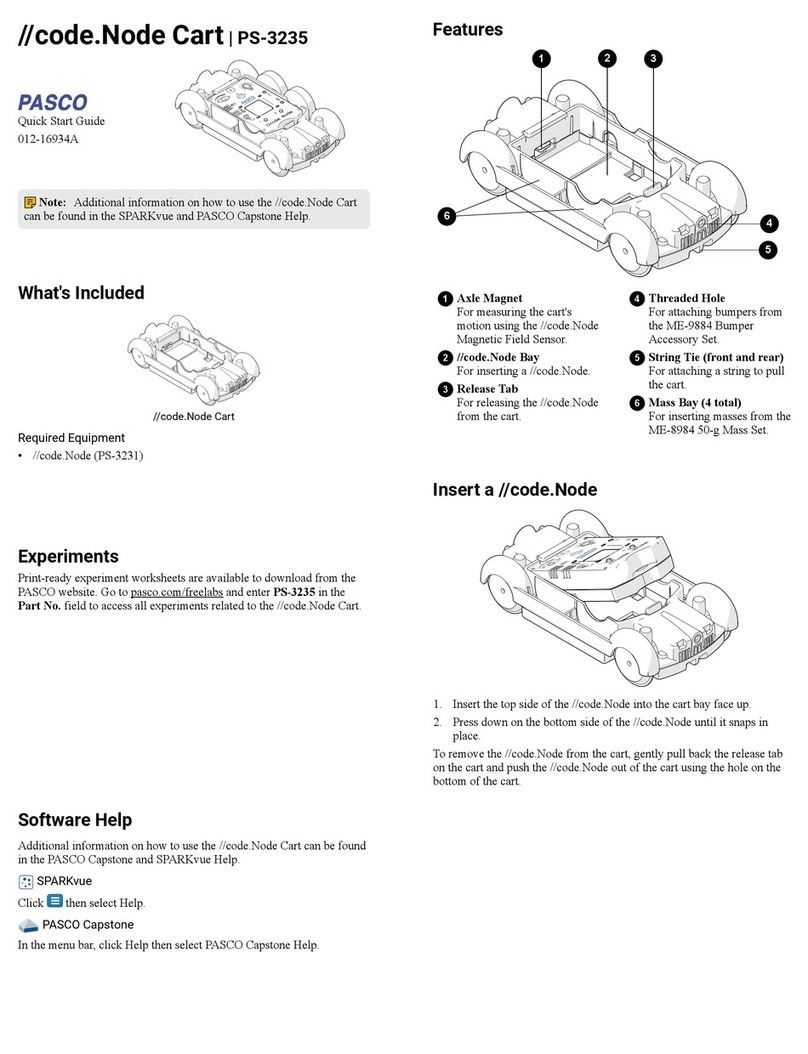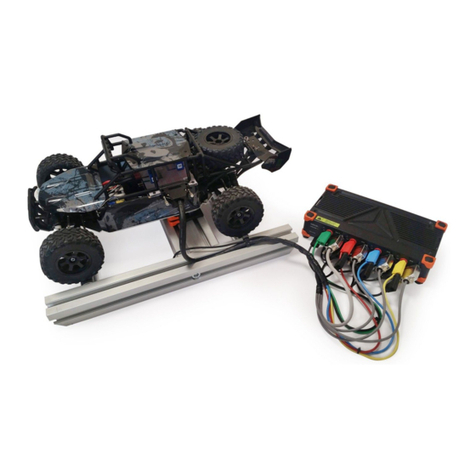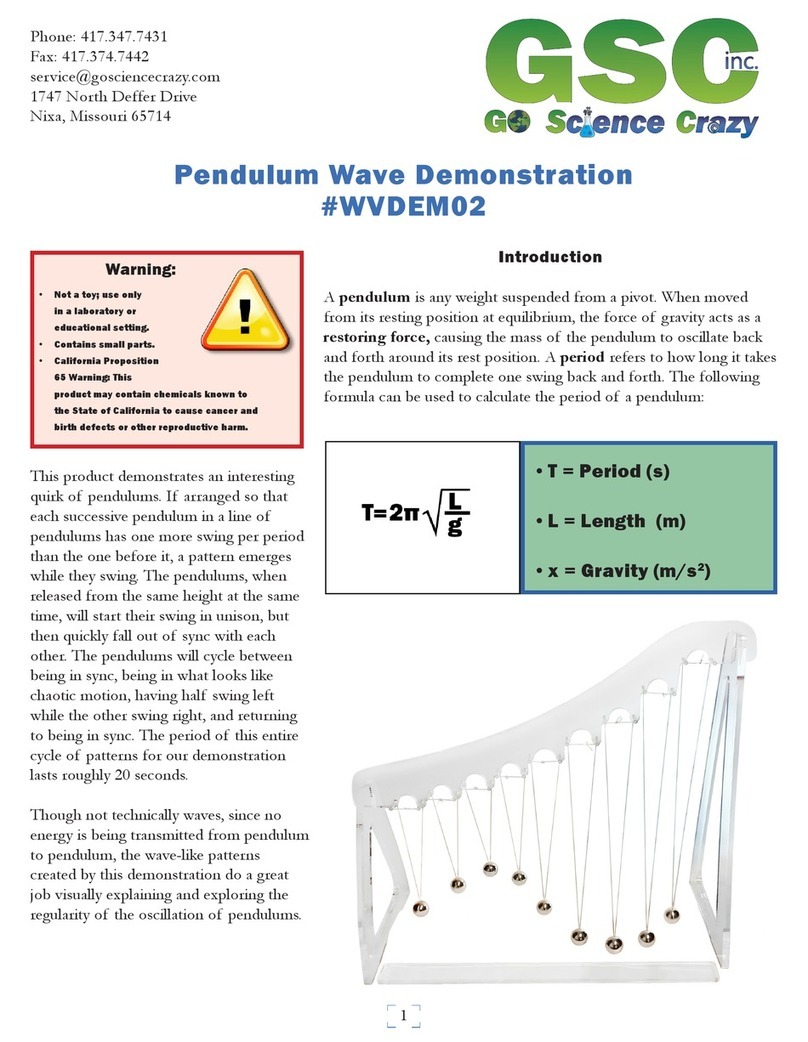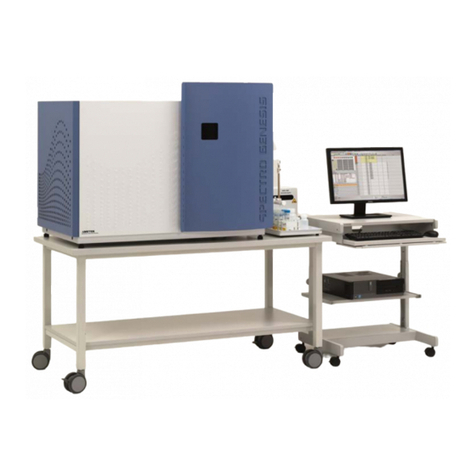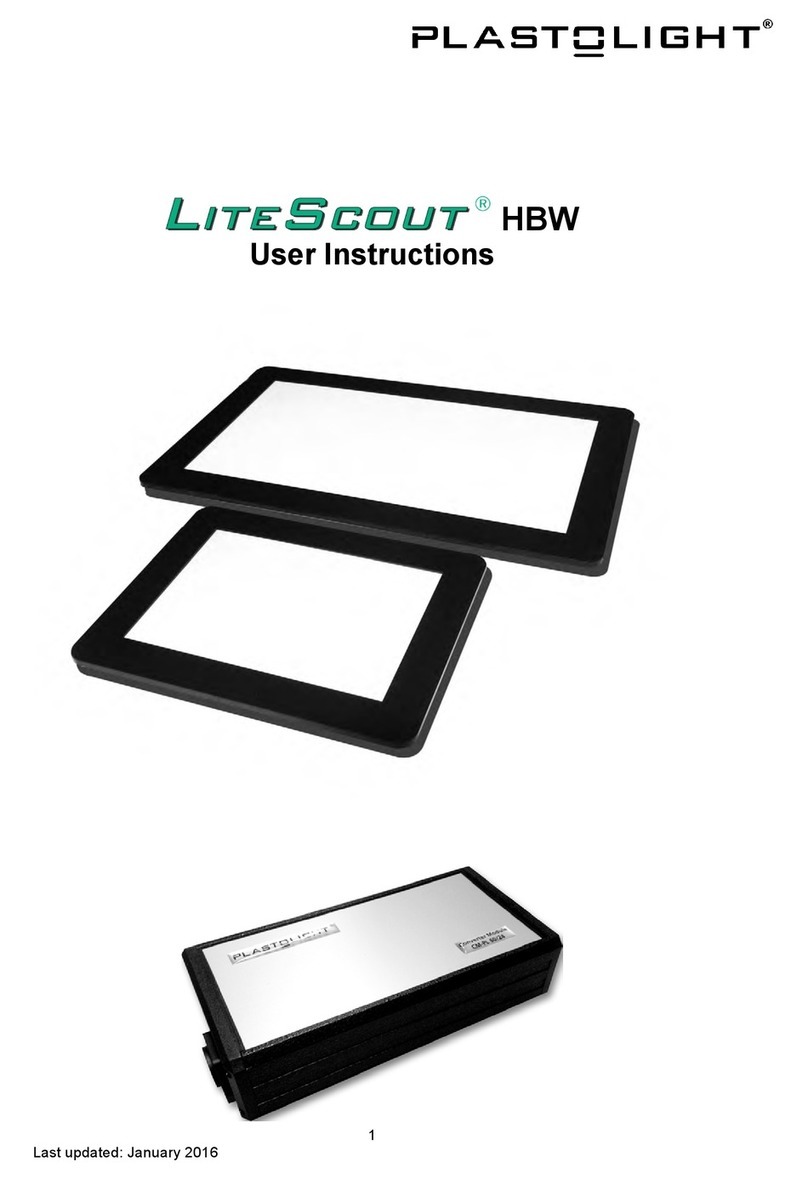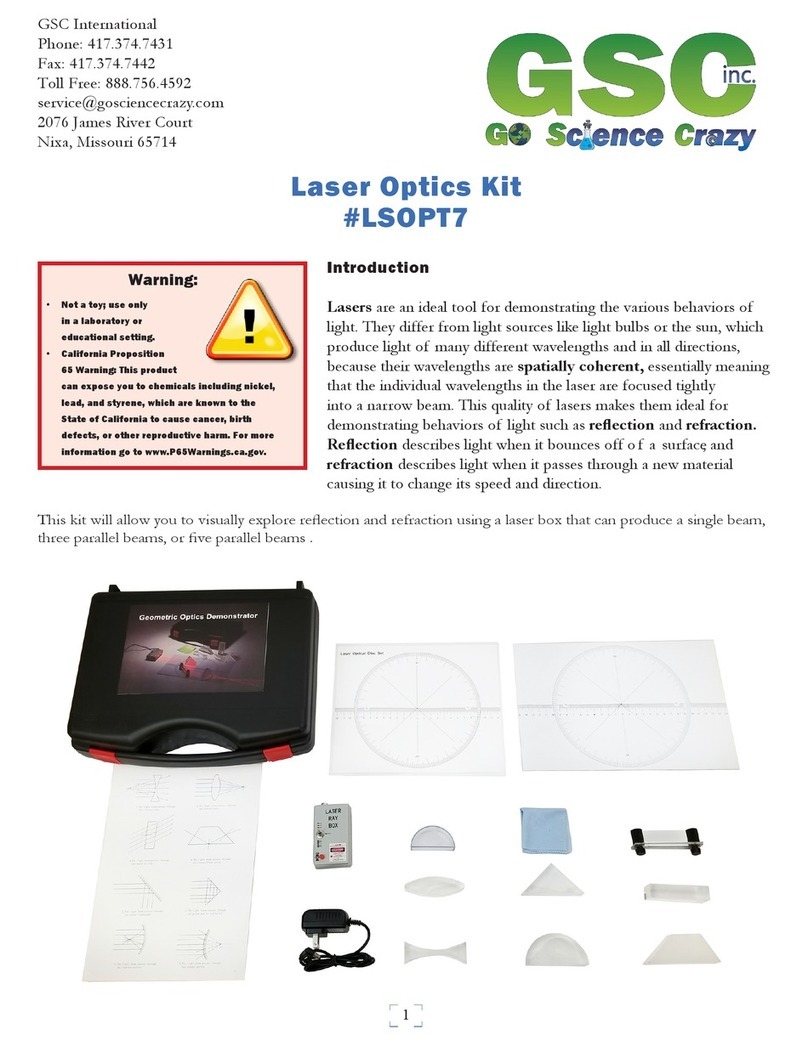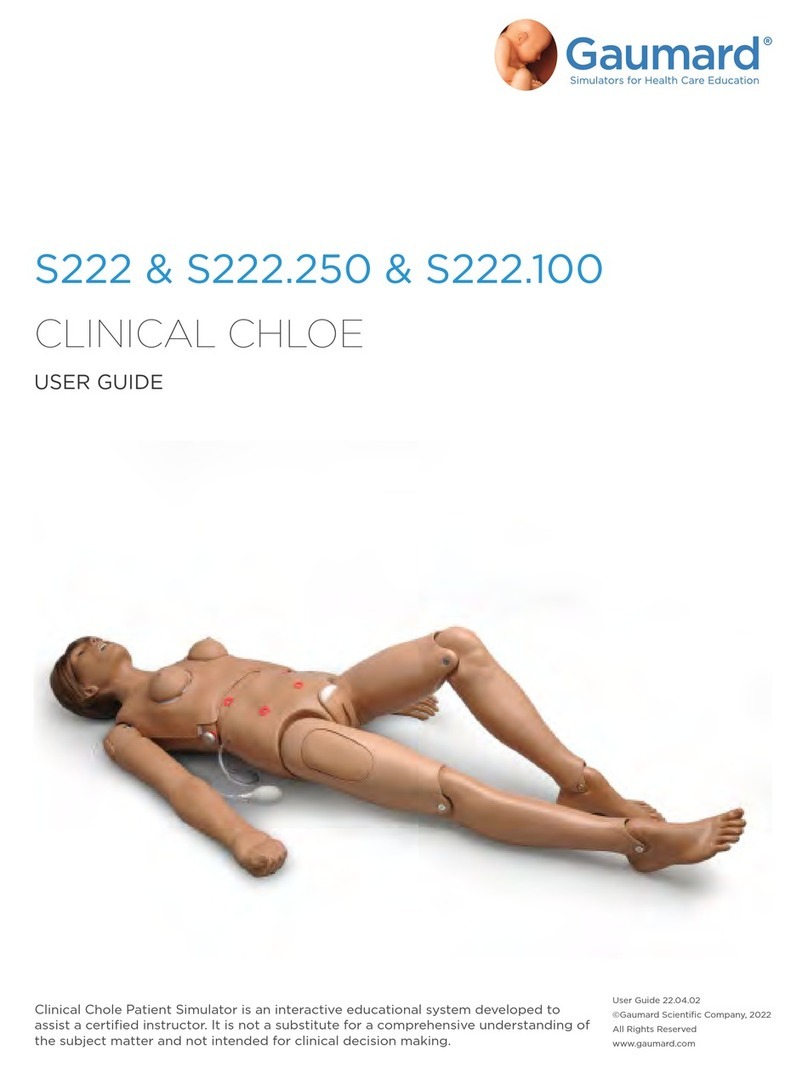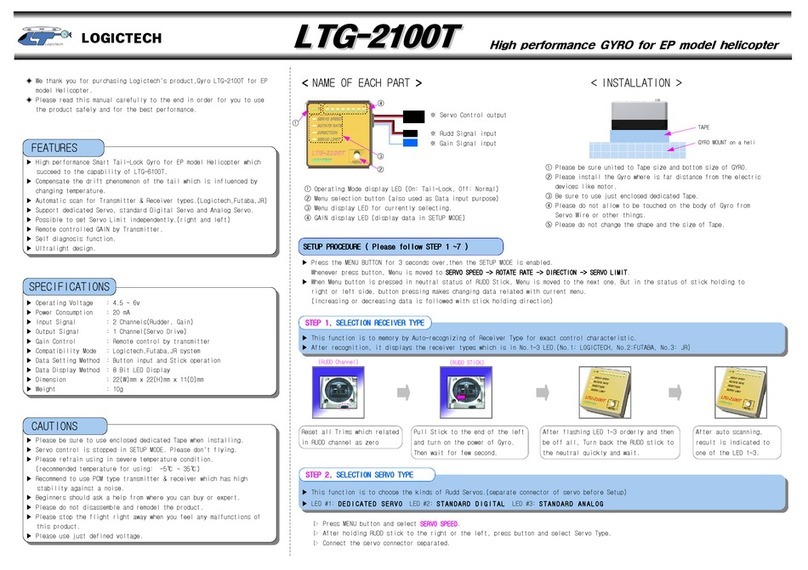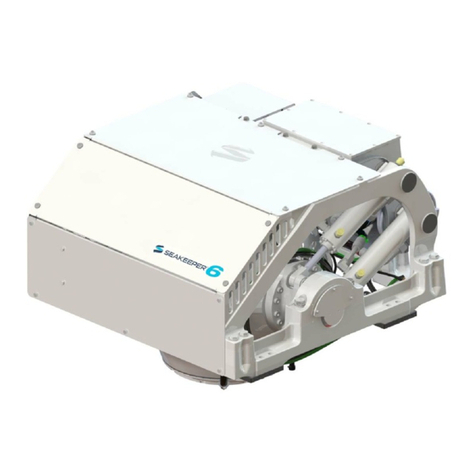ENGLISH
5
Airway Head
1. Head Tilt and Chin lift: Head tilt and chin lift can be performed
on the head. If the head tilt is performed, and airway obstruction
is not activated, the airway valve will be open allowing air passage
to the lungs
2. Jaw Thrust: The jaw thrust maneuver can be performed on the
head. If the jaw thrust is performed, and airway obstruction is not
activated, the airway valve will be open allowing air passage to
the lungs
3. Ventilation The airway is designed to accept a broad range of
airway management devices. Some examples are:
- Oral and Nasal airways (OPA and NPA)
- Bag-Valve-Mask ventilation (BVM)
- Combitube
- Laryngeal Mask Airway (LMA)
- Laryngeal Tube Airway (LTA)
Lubricate the oral and nasal airways liberally with the lubricant
provided prior to inserting any instrument or tube into the
airway. Additionally, instruments and tubes should also be
lubricated prior to use.
Note: There are electronic components mounted inside the
simulator’s airway management head. The following techniques
should not be performed on this simulator due to the inability
to properly sanitize the airway if they are performed:
- Mouth-to-mouth/Mouth-to-mask ventilation
- Insertion of simulated vomit for suctioning
4. Speaker for voice transmission: When the simulator is “On”
a speaker located inside the airway head can produce pre-
recorded voice transmission via remote control. Live voice
transmission can also be achieved by use of a microphone when
connected to the simulator’s torso.
Note: External microphone not supplied by Laerdal
5. Pupils: The simulator is delivered with a set of eyes containing
normal pupils mounted in the head. A separate case contains
3 sets of plastic eye inserts (normal, constricted and dilated
pupils) for use in simulating other conditions.
6. Cricoid Cartilage: A realistic cricoid cartilage is attached to the
airway underneath the face skin allowing the technique of cricoid
pressure (Sellick Maneuver) to be performed.
7. Carotid pulses: When the simulator is “On” palpable carotid
pulses, synchronous to the simulated ECG, are generated.
Note: Care should be taken when palpating the carotid pulse to not
use excessive force as this will result in no pulse being felt.
8. Airway Obstruction: An airway obstruction can be activated
from the remote control. This feature simulates a complete
blockage of the airways by shutting the airway closure valve that
controls air passage to the lung. The Resusci Anne Simulator is
delivered with a default setting of “Manual” mode and means that
the airway closing valve is always in the open position. It may be
manually closed with the use of the remote control. Two other
automatic settings can be selected via the remote control to
drive the airway obstruction feature. See later section titled “Set
Airway Obstuction (Open /Closed) Mode” found under Remote
Conrol for more detail.
Note: When the Resusci Anne Simulator is “Off” the airway will
remain open. If the simulator is turned off while the closure valve
is in the closed position it will open automatically when the
simulator is turned off.
9. Lung: The simulator is equipped with one disposable unilateral
lung that attaches to the airway.
Torso
1. Spontaneous breathing: The simulator is equipped with a self-
contained compressed air container located inside the pelvis of
the torso. A tube from the air container is connected to a small
bladder located under the lung. This bladder provides the
spontaneous chest rise and fall
- When the simulator is “On” the spontaneous breathing
feature can be manipulated by the remote control.
- Spontaneous breathing fill valve is built into the right side of
the simulator. The manual pump provided with the simulator
can be used to fill the compressed air container on an
as-needed basis.
Note: See Maintenance section titled “Filling the spontaneous
breathing air container” for details on this feature
2. Chest compressions: The simulator demonstrates the correct
anatomical landmarks for external chest compressions.
Chest compressions may be performed without the risk of
damage to the simulator’s spontaneous breathing bladder as long
as spontaneous breathing is not activated.
Note: To avoid damaging the spontaneous breathing bladder, do not
perform chest compressions while the spontaneous breathing function
is activated.
3. Defibrillation: The simulator is equipped with two defibrillation
connectors and four ECG connectors for use with AEDs or
manual defibrillators. The ECG signal can also be monitored
across the defib connectors. Using the remote control, the
instructor can select the “ignore defib” function to control
whether or not the defibrillation shall result in conversion
to a perfusing rhythm.
Note: Defbrilliation must be performed over the two defib connectors
only (see fig 3)
Paddle adapters are supplied for use with manual defibrillators.
Getting started with Resusci Anne Simulator
Figure 3
